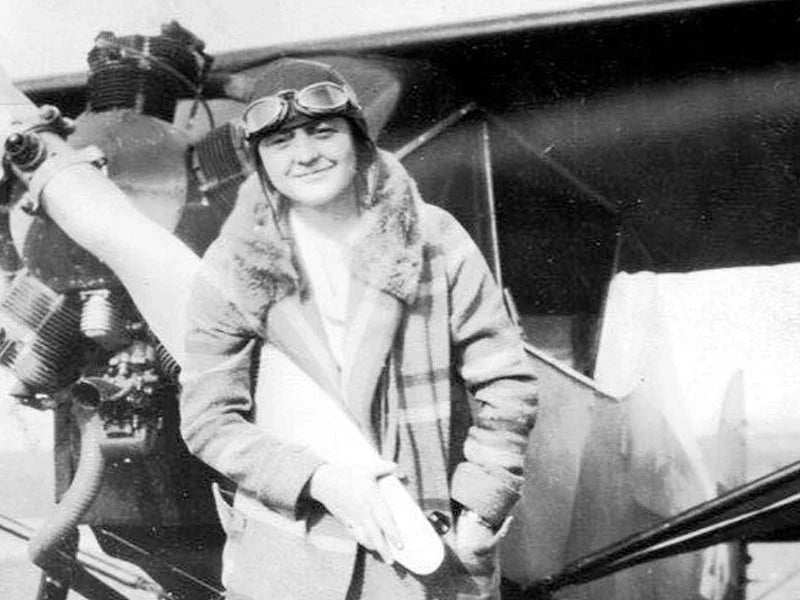The Day The Music Died
His passengers were Charles Hardin Holly, also known as Buddy Holly, Richard Steven Valenzuela, also known as Ritchie Valens, and Jiles Perry Richardson Jr., known as "The Big Bopper."
It was 12:55 am the morning of February 3rd, 1959, when Roger Arthur Peterson taxied out N3794N, a 1947 Model 35 Bonanza with a V-Tail, to the runway for takeoff at the Mason City Municipal Aiport, Iowa.

A 1947 Beechcraft Model 35 Bonanza, similar to N3794N
21-year-old Peterson was a non-instrument-rated Commercial Pilot with 711 hours of flight time.
Peterson had acquired 52 hours of instrument flight training and passed the written test for an Instrument Rating but had failed his instrument flight check ride the previous year.
Over the preceding eight hours, Peterson telephoned the Air Traffic Communications Service (ATCS) three times and was given the weather forecast along his planned route.
Note: Since March 1, 1960, the ATCS has been known as a Flight Service Station.
The weather was originally forecast to be VFR (Visual Flight Rules) along his route of flight, with ceilings of 4,200 feet or higher and visibility of 10 miles or more.
As he taxied out, he once again contacted ATCS for the weather, which by then was calling for a ceiling of 3,000 feet, sky obscured, visibility 6 miles in light snow, and wind gusting 20 to 30 knots.
Flash Advisory
Unfortunately, the ATCS did NOT inform Peterson of a "Flash Advisory" during any of his weather briefings.
The Flash Advisory Peterson was not told of consisted of a band of snow 100 miles wide moving across his flight path at 25 knots. This band of snow included significant moderate to heavy icing conditions.
So, Peterson departed the airport ignorant of the actual weather conditions along his route of flight.
Hubert Dwyer
The owner of Dwyer Flying Service, Hubert Dwyer, watched the aircraft depart and could see the airplane's navigation lights until it was about five miles away as it slowly descended out of sight.
Peterson had activated his flight plan by radio after take off as normal, so Dwyer called ATCS and asked them to call Peterson on the radio.
Peterson never responded to the calls, and Peterson and his passengers never arrived at Fargo.
As soon as daylight came, Dwyer began searching from the air for the missing aircraft. At 9:35 am, he found the airplane, which had crashed in a farm field five miles northwest of the airport.
The aircraft was destroyed, and all four occupants died in the crash. There were about four inches of snow on the ground around the aircraft.
N3794N
The Beechcraft Bonanza was well equipped for flight in instrument conditions with an F-3 Sperry Attitude Gyro.

A Sperry F3 Attitude Gyro like the one in N3794N flown by Roger Peterson
During Peterson's instrument training, the aircraft he flew did not have this type of attitude gyro in it. As it turns out, this particular gyro has the horizons reversed from what you would normally expect.
CAB Accident Report
The Civil Aeronautics Board (CAB) investigated the accident and found no engine failure or structural airframe failure.
In their final report, they concluded that as Peterson departed the airport, he entered total darkness and was unable to see any visual cues like city lights or lighted homes.
It was determined that Peterson was unable to see anything, and combined with the unfamiliar attitude indicator, quickly found him spatially disoriented, resulting in the loss of control of the aircraft.
The aircraft had impacted the ground in a 90-degree right bank and a nose-down pitch angle with a heading of 315 degrees.
The aircraft was traveling at a speed of approximately 195 mph with a 3,000-feet-per-minute rate of descent.
All three passengers were thrown from the wreckage, which was scattered 540 feet from the aircraft. The right wing had broken off from the fuselage.

The Day The Music Died
Here are the three popular musicians in their prime:

In order Buddy Holly, Ritchie Valens, and "The Big Bopper."
This tragic accident has ever since been known as "The Day The Music Died."
I hope you enjoyed this trip through some of the history of aviation. If you enjoyed this trip, and are new to this newsletter, sign up to receive your own weekly newsletter here:: Subscribe here.
Until next time, keep your eyes safe and focused on what's ahead of you, Hersch!







Leave a comment
This site is protected by hCaptcha and the hCaptcha Privacy Policy and Terms of Service apply.